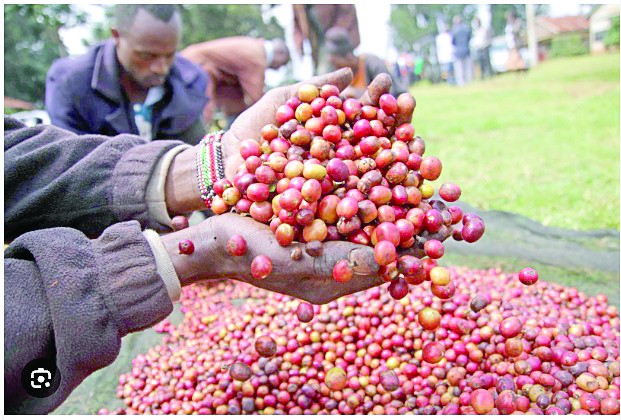Experts warn over dwindling coffee production in Kiambu

While dwindling coffee production in Kiambu County has been generally blamed on urbanisation and other peri-urban setups, experts say that disease, high input costs and poor agronomic practices are also to blame.
Despite being among the largest coffee-producing counties in the country due to its volcanic soils that are well-suited for coffee farming, experts feel that continued change in climate, sale of coffee-producing land to real estate developers and increased prices for inputs should be blamed for the low production.
Deputy Director for Crops in the Kenya Agricultural and Livestock Research Organisation (Kalro) Dr Felister Makini says the declining coffee production is a threat to the economy as it is a major source of foreign exchange and a key part of rural economies.
Housing estates
She adds that most land that were formerly used for coffee production have been converted into housing estates, a trend she said if unchecked could diminish Kenya’s income from the crop.
“Coffee is still a lucrative activity and there is a need to do more promotions because the reason they are taking to real estate is because they are looking at the money.
Should we prove to farmers that they can make money through coffee farming, they will remain with the crop,” said Makini.
In Kiambu and Murang’a counties, farmers have been uprooting their coffee trees to pursue real estate development.
With coffee prices having fallen, making it difficult for farmers to earn a living and farmers having little control over the coffee marketing chain, which includes millers and coffee dealers, realtors are leveraging on the gaps to advance their housing business.
As Kenya’s population continues to grow rapidly and with the urban population growing at 4.2 per cent annually, realtors are racing against the clock to put up more than two million houses to bridge the deficit in the country.
Ejidio Kinyanjui, Managing Director Willstone Homes says coffee production has also been affected by rural-urban migration.
“Most people are now taking a position whereby, instead of schooling and going back to where their ancestral land is, they are now migrating to the urban set-up. With the increase of numbers in the urban set-up, a lot of developments must come into play,” he added.
Population demands that some of the infrastructures be there such as hospitals, schools, rental houses alongside industrialisation where those who are migrating towns will work.
“This has affected agriculture in a very big way,” stated Kinyanjui.
He at the same time argued that diminishing land size against population growth is further to blame for low coffee production.
“Population has surely increased and gone are the days when land was vast in every family. Reduced land size has forced the little available to be developed to accommodate the increased number of people,” Kinyanjui explained.
“Farmers are now looking for other sources of income as coffee production goes down. Most of them have converted their agricultural land into more profitable rental business.”
Going forward, Kinyanjui stated that coffee production should be devolved to less urban areas.
Source of employment
Elijah Gichuru, the Coffee Research Institute Director has since sent out an appeal to the youth and college leavers to embrace coffee farming as a source of employment or incomes.
He said the notion that the practice of coffee farming is for the older generation was misguided and retrogressive, given that there are many employment opportunities in the sector.
“Coffee growing areas are under threat from urbanisation but as researchers, we are looking for new areas to introduce the crop such as Uasin Gishu, Nandi and maize and sugarcane growing zones,” he stated.















